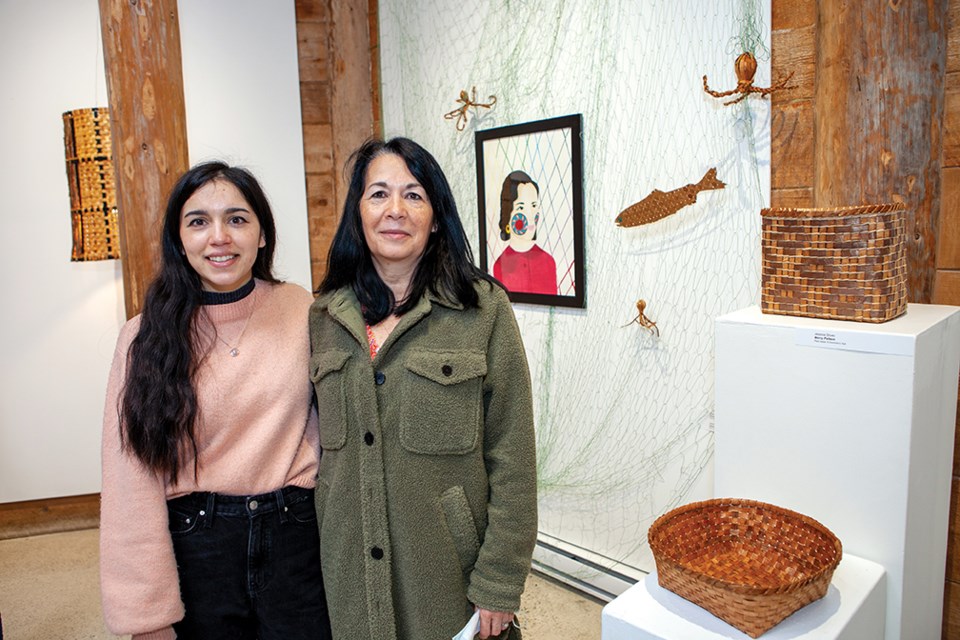An exhibition of woven works and paintings that explore intermingled cultures opened with personal insights shared by the artists and guests during an event at the Sunshine Coast Arts Centre in Sechelt on March 20.
Rainbow Women displays the work of mother-and-daughter artists Jessica Silvey and Ali Casey. Silvey’s family, which is of Coast Salish and Portuguese heritage, has been based in Egmont for generations.
Silvey’s cedar and fabric weaving work is featured alongside paintings by Casey. The brightly-coloured, unflinchingly intimate portraits of women of mixed ethnicity offer a charismatic counterpoint to the tightly-woven baskets, blankets and traditional apparel created by Silvey.
One of Casey’s studies is a head-and-shoulders view of her grandmother, Violet Silvey. As in all the portraits, traditional Coast Salish motifs accent her face.
“If you asked her what she was,” said Silvey, recalling her mother’s shíshálh, Skwxwú7mesh, Tla’amin, and Portuguese heritage, “she would say she was nothing. That she was of mixed blood and she was a mongrel. I heard her say that when I was nine years old, and I was so angry. I thought to myself, ‘You’re the most beautiful woman, inside and out, that I’ve ever known.’”
“[Hearing] that changed a lot for me, in my little world.”
In Casey’s portrait of Violet Silvey, the lips are subtly superimposed over facial adornments that suggest medicine wheels, hinting that cultural identity is more than skin-deep. Behind its frame, a suspended nylon net signals the family’s long involvement in commercial fishing. Two works by Silvey—Octopus and Salmon—, fashioned from red cedar and abalone, are ensnared in the net’s tresses.
Silvey’s first woven work—a tiny root basket made from yellow cedar—is included in the exhibition. It was originally gifted to her father but was loaned back for display. A wedding blanket, created for her stepdaughter, denotes the family’s strength and status through the patterned weave, whose symbolism only becomes visible when viewed at close proximity.
For Casey, who pursued art studies at Capilano University, her Rainbow Women series provided an opportunity to express her own Indigenous heritage. “It really felt like permission to go ahead and start mixing it into my own stuff,” she said.
“So I started with my self-portrait first. It’s probably the one that took the most liberties in terms of actual resemblance to my face. I wanted my skin to look like wood inspired by my mom’s weaving, and the bright style background brings in the idea of headdresses.”
Carmen Joe, another of Casey’s portrait subjects, attended the show’s opening. Joe deconstructed the poem The Onondaga Madonna by Duncan Campbell Scott, one of the architects of Canada’s residential school system. She used her critique of the poem to reflect on empowerment that stems from her compound identity.
“I was told by a non-native [relative] that because I am half-English, I should not have an opinion about the inequality of treatment of Indigenous people that still occurs today,” said Joe. “Nonetheless, I feel that I am a strong First Nations woman with a voice to help and carry our people forward and to teach people about fairness and equality. No matter what race.”
Rainbow Women remains on exhibit at the Sunshine Coast Arts Centre’s Doris Corwston Gallery until April 14.




